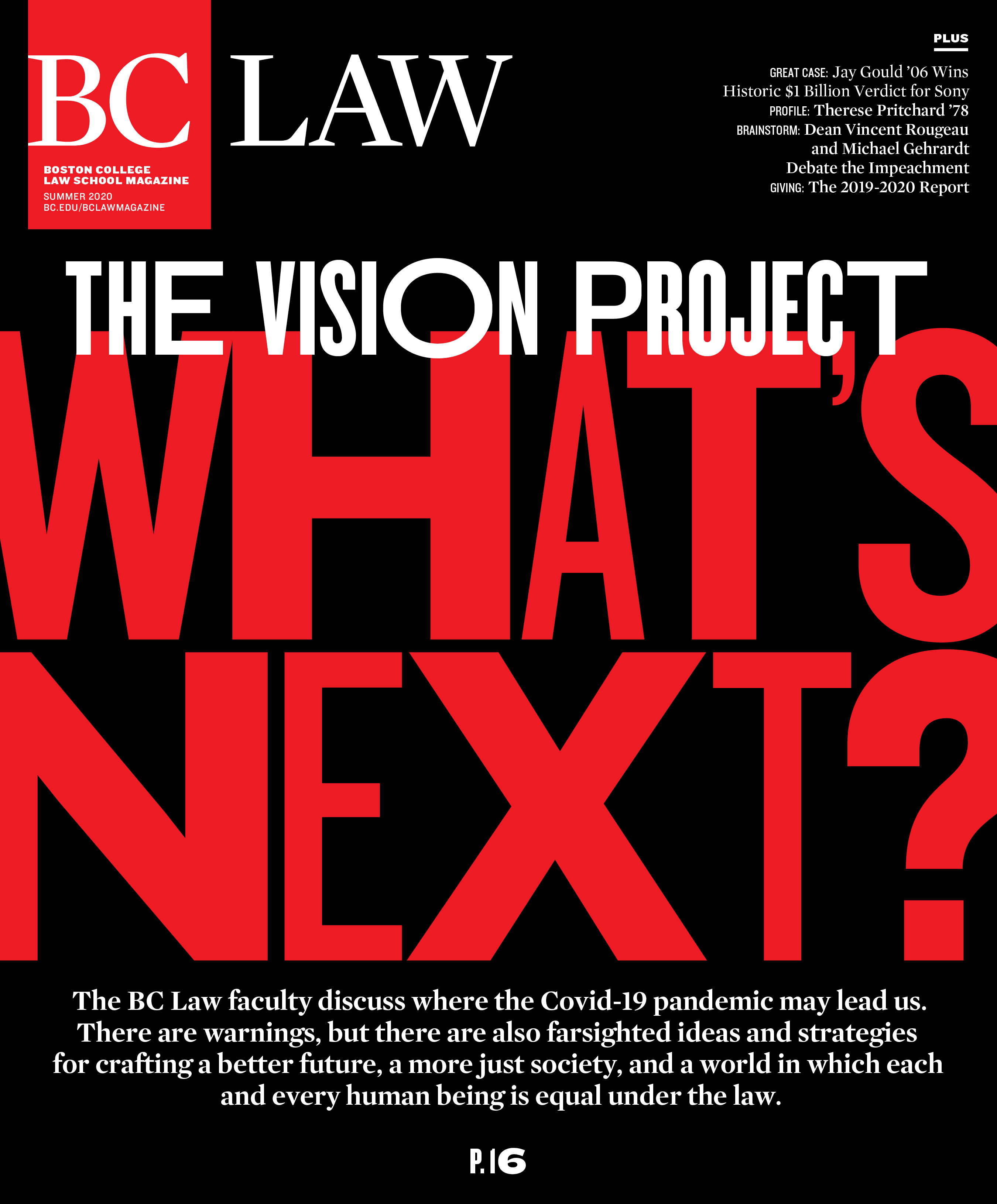
Professor Mark Brodin: Rethinking Criminal Incarceration. The pandemic has put on the front pages a long recognized but largely ignored reality: mass incarceration at a rate and number unknown in the rest of the world. Mass incarceration of minorities, often for non-violent offenses, has decimated poor communities, destroyed families, and placed disproportionate numbers of people of color in the relentless school-to-prison pipeline. Race and class permeate every level of the criminal justice system, from arrest to sentencing.
Rethinking knee-jerk imprisoning, for lengths of time unheard of elsewhere, without even the pretense of rehabilitation, job training, or preparation for reentry into society, must be at the top of the list if we want to create a just society. Provision of skilled and resourced public counsel is up there, too. As Stephen Bright, the inspirational defender of capital cases, puts it, “It’s far better to be rich and guilty than to be poor and innocent in our perverted system.”

Clinical Professor Mary Holper ’03: Who Belongs Where? This pandemic has demonstrated how entrenched the presumption of detention is in immigration law. When lawyers sued Immigration and Customs Enforcement (ICE) and various jails that contract with ICE, seeking release for detainees because it is impossible to socially distance in a communal living setting such as a jail, the government held strong to its presumption of detention. In the government’s view, every single immigration detainee needs to be behind bars in conditions that are identical to criminal detention.
I wonder whether parents would deem it safe to send their children back to college dorm-living if similar conditions were in place, or whether university administrators would entertain a discussion of housing students with such minor protections. If the conditions are good enough for ICE detainees, but not good enough for our students and children, what does that say about the perceived dignity of these different human beings?
The pandemic has also caused us to consider who belongs where. Families have decided whether to join “bubbles” with other families, creating one large family. States that serve as vacation destinations, especially to big-city dwellers, have put away the welcome mat, fearing virus spread and wishing to preserve their groceries and hospital beds for their own residents. Countries, too, have closed borders to incoming migrants, out of similar fears and desires to preserve services for one’s own citizens. Citizenship is always a fascinating topic because nobody can agree on how membership to the club should be allocated. In a global pandemic, decisions about who belongs where have never seemed so crucial.

Professor Kari Hong: A Prescription for Immigration. For the past twenty years, those who wanted to curtail and end immigration have been in charge. But the economic cost is $5 billion more spent on federal immigration efforts than on the combined budgets of the FBI, DEA, and Secret Service. The human cost is tallied with children afraid for their parents’ deportation. The moral cost is losing our standing as the place where the oppressed sought refuge. Today, those seeking safety have their children taken from them, are locked up in detention centers, and have a system designed to deny their claims for relief.
We have an opportunity to replace these failed policies with regulations that welcome those who contribute to our families, our communities, and our country.
First, end all bans that the Trump administration enacted. End the travel ban on Muslim-majority countries. End the asylum ban that bars those seeking protection. End the Remain in Mexico Program, a program deemed illegal by the Ninth Circuit for violating Congress’ intent to protect all seeking safety. End the public charge rule, a policy dusted off from the 1910s to keep out those who are believed to be poor in the future.
Second, end detention for asylum seekers and children, and end the family separation policy once and for all. End detention for anyone who was a lawful permanent resident or has been a long-term resident who is pursuing a legitimate claim in the immigration system. That will save more than $2 billion each year.
Third, make immigration courts independent. Immigration judges are not “judges” in that they are attorneys employed, supervised, and fired by the Attorney General who also controls the deportation policy of the Department of Justice. There is no fair trial if the prosecutor can control the actions of the judge.
Fourth, scale back the reach of ICE. ICE officers should not be policing the streets, hospitals, schools, and parks looking for those with immigration violations. We have a comprehensive criminal justice system for that.
Fifth, legalize the 11 million undocumented. How fitting it would be to legalize those who have been toiling in our fields, building our small businesses, and calling our country their home for years.
Sixth, restore asylum. In the past three years, we ended asylum. It is time to quickly undo the damage and re-open the door to those who go on to become some of the best defenders of our country’s ideals and dreams.

Professor Daniel Kanstroom: ‘We Stand at a Tectonic Moment.’ Sadly, with the pandemic, we see a general convergence of immigrant (and racialized) exclusion and fear of disease. This stands atop a long history of exclusionary measures taken in response to real and perceived threats of disease brought into US communities by “others.” Virtually all such measures have had nasty racial overtones.
In March, 1662, for example, the town of East Hampton, Long Island, ordered, “…that no Indian shall come to towne into the street after sufficient notice upon penalty of 5s. or be whipped until they be free of the smallpoxe…” In 1891, in the midst of the explicitly racist, so-called “Chinese Exclusion” era, Congress authorized the exclusion of those with “loathsome or dangerous contagious disease[s],” a perilously flexible term to be implemented through largely unreviewable discretionary determinations at US ports of entry. Health officers soon became “proud, uniformed agents of the United States government [who] saw Ellis Island’s ornate turrets as towers of vigilance from which they dutifully guarded their country against disease and debility.” Race was always a factor in such decisions. The percentage of (mostly) Asian immigrants excluded at Angel Island exceeded 10 percent, much higher than Europeans at Ellis Island. Similar racialized exclusions—particularly of Haitian immigrants—took place in the HIV/AIDS epidemic.
On the other hand, some public health and economic support measures express a deeper sense of social solidarity and care than we have seen in this country since the Franklin D. Roosevelt administration. All of this is to say that we stand at a tectonic moment, a point of inflection during which much attention must be paid not only to short-term crises but also to historic opportunities to engage in real, progressive change.
In an inevitably globalized economy, we face a dangerous array of diseases, including drug-resistant TB, MERS, SARS, Ebola, ZIKA, West Nile, and so on. The view of the nation-state as a gated community—while perhaps technologically feasible in the very short term—is an unsustainable xenophobic fantasy in the long term with devastating economic and human rights consequences that we must avoid.
To read other pieces in this issue’s The Vision Project, click here.



